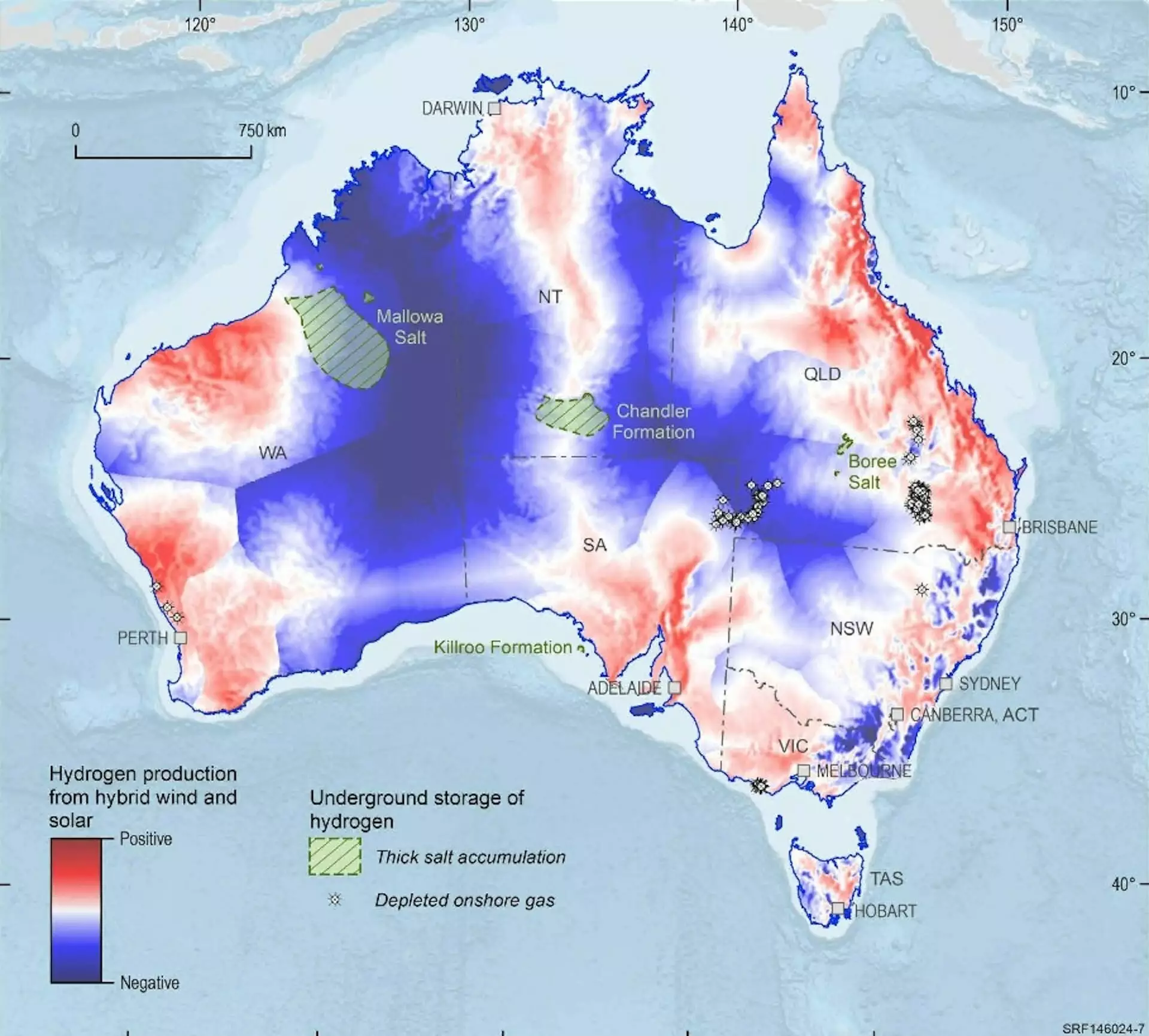The pursuit of hydrogen as a clean energy solution is not merely an environmental initiative for Australia; it is a core element of the nation’s strategy to assert itself as a global leader in low-emissions technologies. With the recent unveiling of the National Hydrogen Strategy, spearheaded by Federal Climate Change and Energy Minister Chris Bowen, Australia is setting the stage for a significant transition toward green hydrogen production. This updated roadmap aims not only to facilitate the creation of a competitive green hydrogen market but also to position the country favorably in a rapidly evolving global landscape where sustainable energy sources are becoming increasingly pivotal.
The Evolution of the Hydrogen Strategy
The National Hydrogen Strategy serves as a successor to the initial framework established in 2019 by former Chief Scientist Alan Finkel. This continuity in strategic leadership underscores a growing recognition among policymakers of hydrogen’s potential role in Australia’s energy landscape. The 2023 revision reflects an adaptive approach, responding to both technological advancements and the shifting economic conditions surrounding hydrogen production. Acknowledging this evolution is crucial, as it highlights the government’s intent to remain proactive in an energy sector marked by instability and fierce competition.
However, the updated strategy still raises critical questions regarding its execution. One pressing issue is how this new approach aligns with existing energy policies and whether funding mechanisms will sustain hydrogen projects that ultimately lack viability. The specter of investing taxpayer dollars into potentially futile endeavors continues to loom large.
The Science Behind Hydrogen
Hydrogen, being the simplest and most abundant element, has multifaceted applications across various industries. Traditionally, it has been utilized in the production of fertilizers, plastics, and other chemicals. Moving forward, green hydrogen—produced through the electrolysis of water using renewable energy—has the potential to displace fossil fuels in heavy industries. The vision for Australia should extend beyond mere hydrogen production; it must include a strategic focus on how to harness hydrogen to achieve meaningful emissions reductions while facilitating energy storage solutions and cross-border energy trade.
Despite these opportunities, transitioning to a substantial green hydrogen sector poses significant challenges. Presently, Australia relies on natural gas for hydrogen production, a process that contributes to greenhouse gas emissions. The government acknowledges the hurdles in scaling up green hydrogen production, particularly due to the current cost barriers preventing buyers from fully engaging with the market.
Critical to the new strategy are the outlined production targets: 500,000 metric tons of green hydrogen per year by 2030 and an ambitious 15 million metric tons by 2050. Stretch targets of 1.5 million metric tons and 30 million metric tons for the same timeframes present an aggressive goal set to stimulate production and attract investment. However, meeting these targets depends significantly on identifying reliable customers and establishing a market infrastructure capable of supporting the hydrogen economy.
The omission of a previously established price target of $2 per kilogram for hydrogen production may suggest a pivotal shift in strategy, recognizing the inherent challenges of transporting and storing hydrogen. While setting realistic financial benchmarks can drive investor confidence, the strategy’s success hinging on sound policy decisions remains an area needing careful consideration.
The National Hydrogen Strategy identifies key sectors such as iron, alumina, and ammonia for hydrogen application and outlines areas where hydrogen excels in reducing emissions: aviation, shipping, electricity storage, and freight transport. This targeted approach serves to hone in on realistic expectations for hydrogen’s role within specific industries. However, the strategy must clarify how dedicated resources will be allocated to these priority sectors.
Moreover, as the strategy attempts to balance export ambitions with the necessities of domestic production, concerns linger about the feasibility of liquid hydrogen exports given the complexities and substantial costs associated with transport logistics.
Equally important is the strategy’s acknowledgment of community concerns regarding hydrogen technology, especially safety issues arising from its volatile nature. The updated document places a stronger emphasis on community benefits by promoting job creation and diversified regional economies, alongside consulting with First Nations communities. Yet, without a clear framework for ensuring that these benefits are realized, skepticism may overshadow public support.
Additionally, the strategy intersects with various fiscal measures introduced in recent months, including the Hydrogen Headstart grants program and related tax credits. While these incentives have the potential to catalyze growth, their design and operational transparency remain critical to ensuring they effectively contribute to the intended outcomes.
The National Hydrogen Strategy is poised to make a significant impact over the next decade; however, its success will depend on numerous factors, including effective policymaking, clear funding trajectories, and community engagement. Key indicators of progress include the launch of large-scale hydrogen projects, long-term contracts with end-users, and the construction of necessary infrastructure. Should these elements fail to materialize, Australia may need to reconsider its hydrogen ambitions and devise a more viable energy strategy, aligning domestic capabilities with international trends. As the world shifts toward sustainability, Australia’s proactive engagement in hydrogen production must be closely watched and carefully managed to ensure it ultimately meets the expectations set forth in this ambitious strategy.

